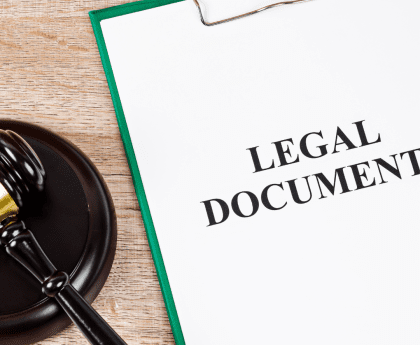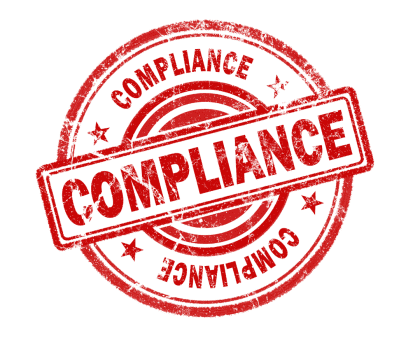The Process of LLP Registration
Introduction
Limited Liability Partnership (LLP) registration is a crucial step for businesses looking to operate under this legal structure. LLPs offer a unique combination of limited liability for its partners along with the flexibility of a partnership, making it an attractive option for many entrepreneurs. In this article, we’ll delve into the detailed process of LLP registration, covering each step involved.
Step 1: Obtain Designated Partner Identification Numbers (DPINs)
Before initiating the LLP registration process, the designated partners of the proposed LLP need to obtain DPINs. DPINs are unique identification numbers issued by the Ministry of Corporate Affairs (MCA) to individuals intending to be appointed as partners in an LLP. This can be done by filing Form DIR-3 with the Registrar of Companies (RoC).
Step 2: Acquire Digital Signature Certificates (DSCs)-LLP Registration
Next, the designated partners must acquire Digital Signature Certificates (DSCs). DSCs are electronic documents that serve as a digital equivalent of physical or paper certificates. They are used to digitally sign electronic documents and transactions, ensuring their authenticity and security. All documents filed for LLP registration need to be digitally signed by the designated partners using their DSCs.
Step 3: Name Reservation and Approval-LLP Registration
Choosing an appropriate name for the LLP is crucial, as it represents the identity of the business. The proposed name must comply with the guidelines laid down by the MCA and should not infringe upon any existing trademarks or violate any laws. Once a name is selected, an application for reservation of name (Form-1) can be filed with the RoC. Upon approval, the name will be reserved for a period of 3 months, during which the LLP registration process needs to be completed.
Step 4: Preparation of LLP Agreement -LLP Registration
The LLP Agreement is a crucial document that outlines the rights, duties, and responsibilities of the partners, as well as the rules governing the operation of the LLP. It must be drafted carefully and in accordance with the provisions of the Limited Liability Partnership Act, 2008. The agreement should cover aspects such as profit sharing, decision-making processes, capital contributions, admission of new partners, and dispute resolution mechanisms.
Step 5: Filing of Incorporation Documents-LLP Registration
Once the above steps are completed, the designated partners can proceed with filing the necessary incorporation documents with the RoC. These documents typically include:
- Form-2: Incorporation Document and Statement
- Form-3: Details of LLP Agreement
Along with these forms, other supporting documents such as address proofs, identity proofs, and consent letters from the partners may also need to be submitted.
Step 6: Payment of Fees and Stamp Duty
LLP registration involves the payment of prescribed fees to the RoC based on the capital contribution of the LLP. Additionally, stamp duty may be applicable on the LLP Agreement, depending on the state where the LLP is registered. The requisite fees and stamp duty need to be paid online through the MCA portal.
Step 7: Issuance of Certificate of Incorporation
Once the RoC verifies the submitted documents and ensures compliance with all legal requirements, the LLP will be issued a Certificate of Incorporation. This certificate serves as conclusive evidence of the LLP’s existence and marks the completion of the registration process.
Conclusion
LLP registration is a structured and systematic process that involves several steps, each of which is essential for establishing a legally compliant LLP. By following the prescribed procedures and ensuring adherence to all regulatory requirements, businesses can successfully register their LLPs and avail themselves of the benefits associated with this business structure. It is advisable to seek professional guidance or consult with legal experts to navigate through the intricacies of LLP registration and ensure a smooth and hassle-free process.
Faqs
What is a Limited Liability Partnership (LLP)? A Limited Liability Partnership (LLP) is a type of business structure that combines the features of a partnership and a corporation. It offers limited liability protection to its partners while allowing them to manage the business directly.
What are the benefits of registering a business as an LLP? Registering a business as an LLP provides benefits such as limited liability protection, tax advantages, flexibility in management, and perpetual existence despite changes in partners.
What is a Designated Partner Identification Number (DPIN), and why is it necessary? A Designated Partner Identification Number (DPIN) is a unique identification number issued to individuals who intend to become partners in an LLP. It is necessary for their identification and participation in the LLP.
What are Digital Signature Certificates (DSCs), and how are they used in LLP registration? Digital Signature Certificates (DSCs) are electronic documents used to sign digital transactions securely. In LLP registration, DSCs are required for digitally signing incorporation documents and ensuring their authenticity.
How can I reserve a name for my LLP, and what are the guidelines for choosing a name? To reserve a name for an LLP, an application must be filed with the Registrar of Companies (RoC). The name must adhere to guidelines set by the Ministry of Corporate Affairs (MCA) and should not infringe upon existing trademarks.
What is included in the LLP Agreement, and why is it important? The LLP Agreement outlines the rights, duties, and responsibilities of partners, as well as the internal management structure of the LLP. It is essential as it governs the operations and relationships within the LLP.
What documents are required to be filed for LLP registration? Documents required for LLP registration include Form-2 (Incorporation Document), Form-3 (LLP Agreement), subscription sheet signed by partners, details of partners and designated partners, and address proof of the registered office.
How long does it take to complete the LLP registration process? The duration to complete the LLP registration process varies, but it typically takes a few weeks from the submission of documents to obtaining approval from the Registrar of Companies (RoC).
What are the ongoing compliance requirements for LLPs after registration? LLPs are required to fulfill various annual compliance requirements, including filing annual returns, maintaining accounting records, and complying with tax obligations, to maintain their active status and adhere to regulatory norms.
Author Note: This article was written by Noor Siddiqui, a contributor from etaxdial.com, with expertise in business registration and compliance matters. For more information and assistance regarding LLP registration and related topics, readers can visit the etaxdial.com website. Noor Siddiqui aims to provide valuable insights and guidance to entrepreneurs and businesses seeking to understand the process of LLP registration and its benefits.




